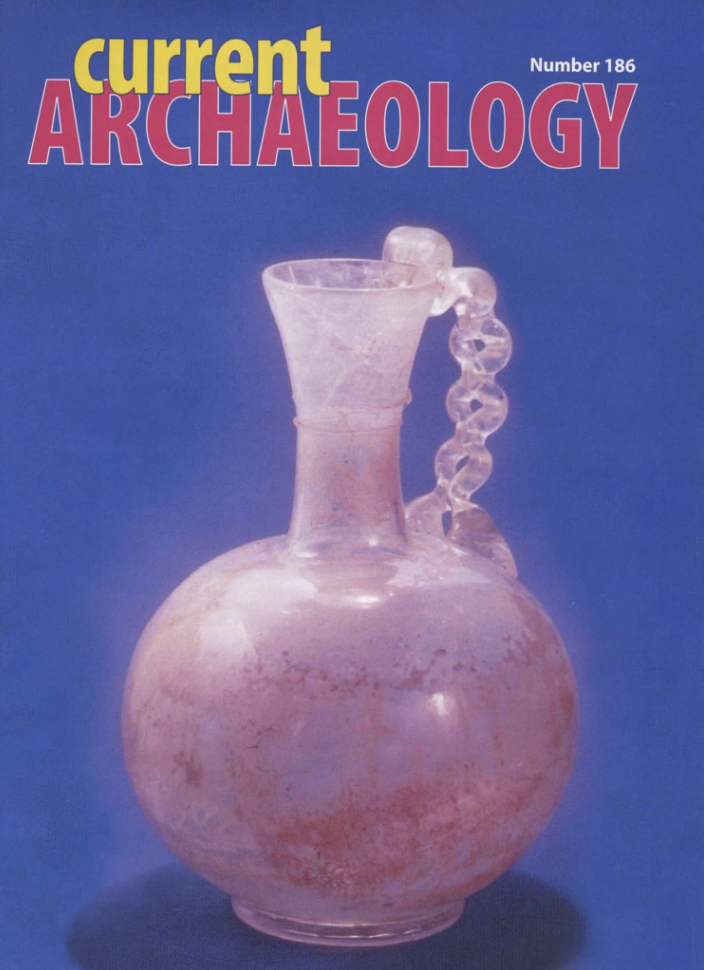What’s new in the archaeology of glass? The 16th Congress of L’Association Internationale pour I’Histoire du Verre will take place in London from 7th to 13th September 2003 and will provide a fine opportunity to discover what has been happening in the archaeology of glass in Britain and beyond. The advent of PPG 16 has produced a new breed of ‘small finds’ specialists who have been dramatically transforming their subjects, and Justine Bayley, who heads the ancient technology section in English Heritage’s Centre for Archaeology, has brought together the leading specialists to provide a major feature on glass that dominates this issue.
We begin with the Romans. The invention of glass-blowing later in the first century BC transformed the economics of glass production: the Roman conquest introduced it to Britain. Another Roman introduction was gladiatorial combat and Jenny Price looks at the glass cups which depict gladiators. Then comes Sex and the Cemetery as Hilary Cool expertly derives the sexual and religious nuances to be found in the study of glass from cemeteries.
Anglo Saxon glass is in many ways a continuation of Roman glass. However the Coppergate excavations in York in the 1980s are still producing surprises, as Justine Bayley describes how she tracked down the evidence that glass beads were actually being manufactured at Coppergate.
The revolution in glass manufacture took place around the end of the first millennium AD when soda glass was replaced by potash glass and manufacturing moved from inside towns out into the forest. The story is told in two linked articles, on medieval glass, and Tudor and Stuart glass.
Finally comes the big question: which of these glass sites needs protecting? English Heritage has been investigating industrial sites under the Monuments Protection Programme, and here David Crossley summarises his report and in particular tells the story of what happened to glass in the post-medieval period.
But this issue is not all glass. There are also two accounts of excavations. At Whitton in Lincolnshire, Susan and Philip Sibborn were digging their garden when they found a skeleton. Archaeologists were called in, the garden was dug up, and more and more skeletons were revealed. What did it all mean?
Finally, a rescue excavation. At Bestwall, just outside Wareham, permission was given for gravel quarrying just before the introduction of PPG16. Fortunately an amateur, Lilian Ladle stepped in and she has been digging there ever since, discovering everything from an elaborate Middle Bronze Age house down to a flourishing Roman pottery industry.

